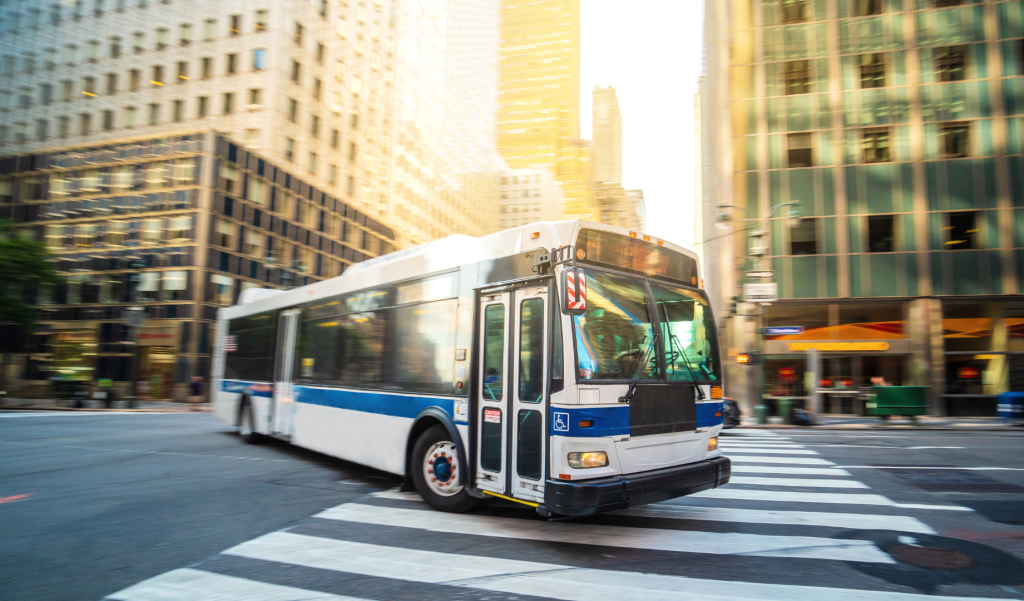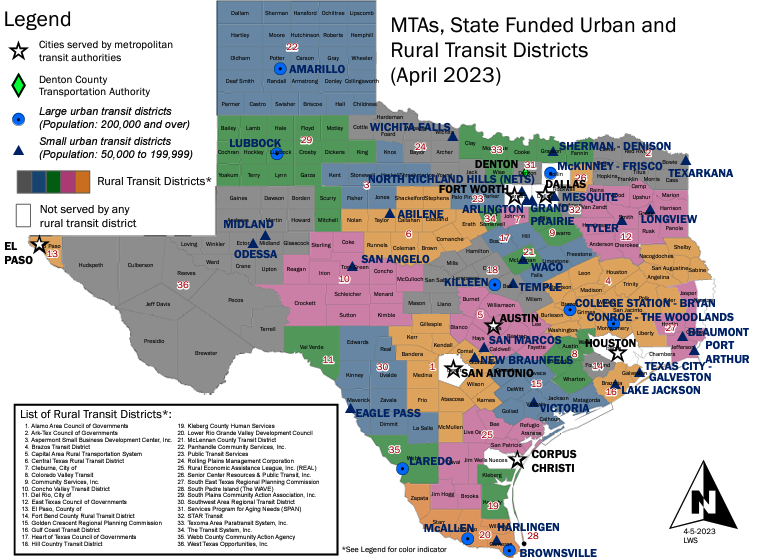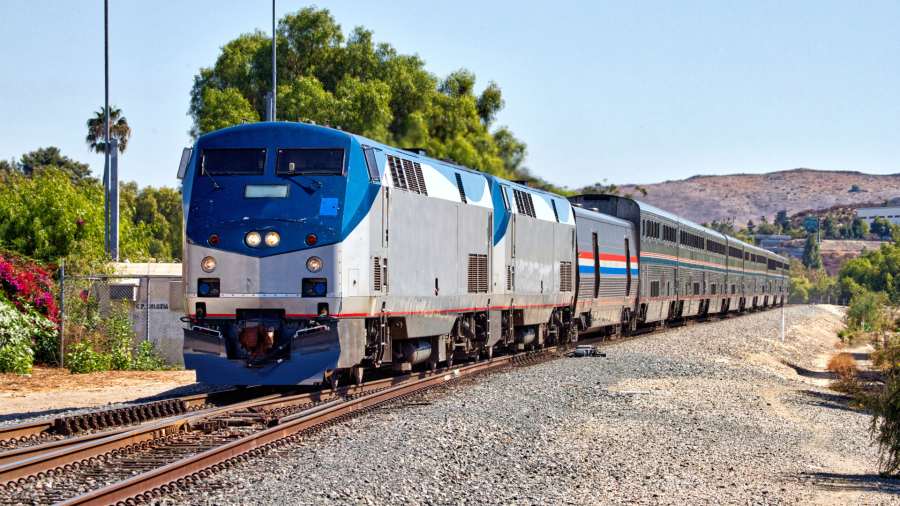Texas is well known for its sprawling highways and car-dependent nature, but for those looking for alternative transportation, the options aren't as limited as you might think.

Public transportation can be a great alternative to driving a personal vehicle, whether you live in a major city, suburb, or rural part of the state. Not only is it great for the environment, but it can also save you money on gas and other car-related expenses.

Three types of transportation districts exist in Texas—metropolitan, urban, and rural. There are eight Metropolitan Transportation Authorities (MTAs) that serve populations of 200,000 and above, 32 urban districts that serve between 50,000 and 199,999 people each, and 36 rural districts across the state.
So how does one go about accessing these public services? For starters, figure out whether you live in an MTA, urban, or rural district to see what services are available. There's a great map by the Texas Department of Transportation that shows the boundaries of all public transit districts. TxDOT also provides a table with service areas, links, and contact information for each provider.
MTAs serve the most people at a given time. They are designed for travel within their city limits and are mainly comprised of buses and trains. Given these systems can be found in major metro areas, utilizing these systems not only saves time on your commutes but also saves gas and energy. In doing so, you can help improve air quality!
Even though Texas' 32 urban transit districts are less expansive than those found in is metropolitan centers, they are still readily available for use if you live within the confines of the district. Urban systems are split into two categories: large urban areas and small urban areas.
Some of the large urban transit districts can be found in the Amarillo, Brownsville, Conroe-The Woodlands, Galveston-Texas City, Killeen, Laredo, Lubbock, McAllen, and McKinney-Frisco metro areas.
For more information on each of these individual transit agencies, visit TxDOT and sort the table to "Urban" to find relevant resources to your local area.
There are 36 rural districts spanning the great state of Texas. While it might seem counterintuitive given the size of Texas and the distance between individual rural areas, it doesn't mean that these options don't exist. These rural transit districts connect areas of the state that aren't as easily accessible and serve as a great way to get around your local area in a greener, more efficient way.
For more information on the individual transit agencies, visit TxDOT and sort the table to "Rural" to find relevant resources to your local area.

Your options for transportation aren't just limited to local transit authorities and programs. There are many options for state-wide and national travel including Amtrak and long distance commercial bus services. These programs can be used as an alternative mode of transport for road trips, business trips, or just traveling between communities.
Whether you use public transit for travel, commutes, or day-to-day purposes, these options are readily available for your next trip! Anyone from big city dwellers to rural residents of the more remote parts of our state can take advantage of these systems. Plus, it's very cost-effective!